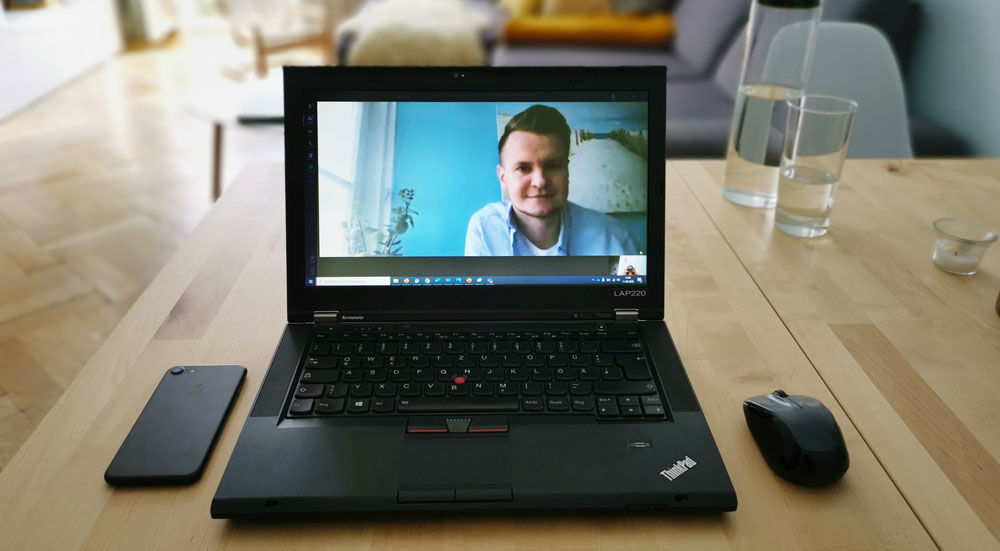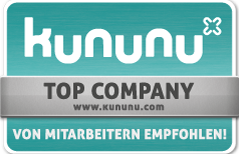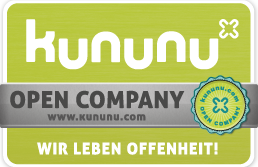One year of Project Management Office at PROMOS – Erik Walter makes an initial assessment
Hello Erik, today we would like to talk to you about the Project Management Office. What specifically led to the founding of this division?
Erik Walter: It all started with the observation that comprehensive, multi-project management would create a relatively powerful lever for structuring our project work more efficiently. We wanted to create a kind of floating instance that oversees projects from an objective observation point, forms a point of contact for project managers and defines a precise framework for project management at PROMOS.
Who is part of the PMO team and what are your tasks?
Erik: We have three people in the team – Arlinda, Grit and me. Thomas runs the unit, but we generally work pretty autonomously. We divide the tasks so that Arlinda and I focus on supervising projects that take a classic approach while Grit – who is a certified Scrum Master – takes care of the agile projects.
How do you decide whether a project is managed using an agile or classic method?
Erik: Classic project management in accordance with the waterfall model currently still dominates our project business. We use the agile method Scrum primarily for product development in the easysquare area, but we have also performed our first customer projects using this. Both methods have their advantages. Which version makes most sense depends on the type of project. In my opinion, a hybrid approach will become increasingly popular in the future. For large projects, we will naturally always have the classic phases of the waterfall model. Within these phases we will be much more flexible, though. This means we enter feedback loops more frequently, can adjust concepts dynamically and see whether we are going in the right direction when developing solutions. For smaller and medium-sized projects in particular, we increasingly discuss with the customer whether an agile approach might be possible.
How does the transfer of knowledge between you and the project managers work?
Erik: Over the course of 2020, we have trained all consultants for project management in accordance with the PMO’s specifications in our project management manual. This training not only addressed how the project is maintained and managed in our project management tool, but also further tools, project rules, procedures for communicating with customers as well as the workflow and most important milestones in the individual project phases. Of course, Grit also provided equivalent training in the Scrum methodology. Such training courses will now take place regularly.
Which other milestones have you achieved over the past year?
Erik: Something that is very important for our work in the scope of multi-project management is the use of our project cockpit. This has been available at PROMOS for many years. It is basically an evaluation from Controlling for all projects according to their status. We have now taken on the responsibility of defining specific rules for this cockpit. For example, what should be done if deadlines have been missed or a budget overrun is imminent? These rules can be viewed in a central location and we regularly send information to the responsible project managers with the relevant status and, if applicable, a small reminder of open tasks.
Another important measure that we have successfully implemented is monthly quality management meetings with the project managers of large and medium-sized projects. We have developed a special questionnaire for this, for example have internal and external jour fixe meetings been arranged, are there project risks, are there problems in communication, and so on. In this way, we ensure that the steps and methods of our project manual are adhered to. In addition, we can intervene immediately in case of problems, readjust things and prevent potential escalation at an early stage.
What is your impression? Have these measures met with a positive response from employees?
Erik: Yes, definitely. Most of the project managers are extremely pleased with this round of measures, particularly those who have less project experience. They are happy to have a central instance as a point of contact within the company. We have really noticed that, over time, more and more questions are being asked and the basis of trust is continuing to grow. The team leaders and consultants also appreciate this. They are also approaching us more frequently to ask for support. Naturally we are pleased that the PMO and these measures have been so well received.

In the interview, Erik Walter gives an insight into the work of the PMO team.
Are there also measures that already address customers actively and directly?
Erik: Of course many measures have an indirect impact. Customers feel more included if there is a clear and even more structured procedure and regular consultation meetings with the project manager. Something that our customers certainly appreciate is our new project pages in MS SharePoint, for which we have introduced a concrete template. Here, those involved can find key project documents prepared in a structured way. Files can be exchanged in this central location and jointly worked on by all parties instead of having to be sent by e-mail. This is a huge advantage, especially in larger projects. MS Teams will also support us here in the future.
It is also possible for project managers to involve us in projects as a third instance. We then discuss, for example, lessons learned with the customer. Many of our customers have been regular clients for many years and for future projects we want to find out here, too, what is going well and where there is still room for improvement.
Overall, that all sounds like a great success. Is there still more to do?
Erik: Of course we already have a number of plans for the future that still need to be implemented. These include further adjustments and improvements to our project management tool. Our goal is also to subject the PROMOS project management manual to another thorough, step-by-step test and continuously improve it.
Overall, you can certainly say that we have done a lot of things very well in the past. We have a broad range of useful tools that provide significant added value for our customers. With the PMO, our aim is to ensure that these are improved even further and are also used appropriately. I am firmly convinced that we will succeed in making our project management even more efficient, targeted and yet more professional. We are outstanding on the market as far as our technical solutions are concerned. Because our company has grown so fast, our project management has not always been able to keep up at the same level. With the implementation of the Project Management Office, we are now well on the way to setting new benchmarks here, too.
Thank you Erik for taking the time for this interview.

